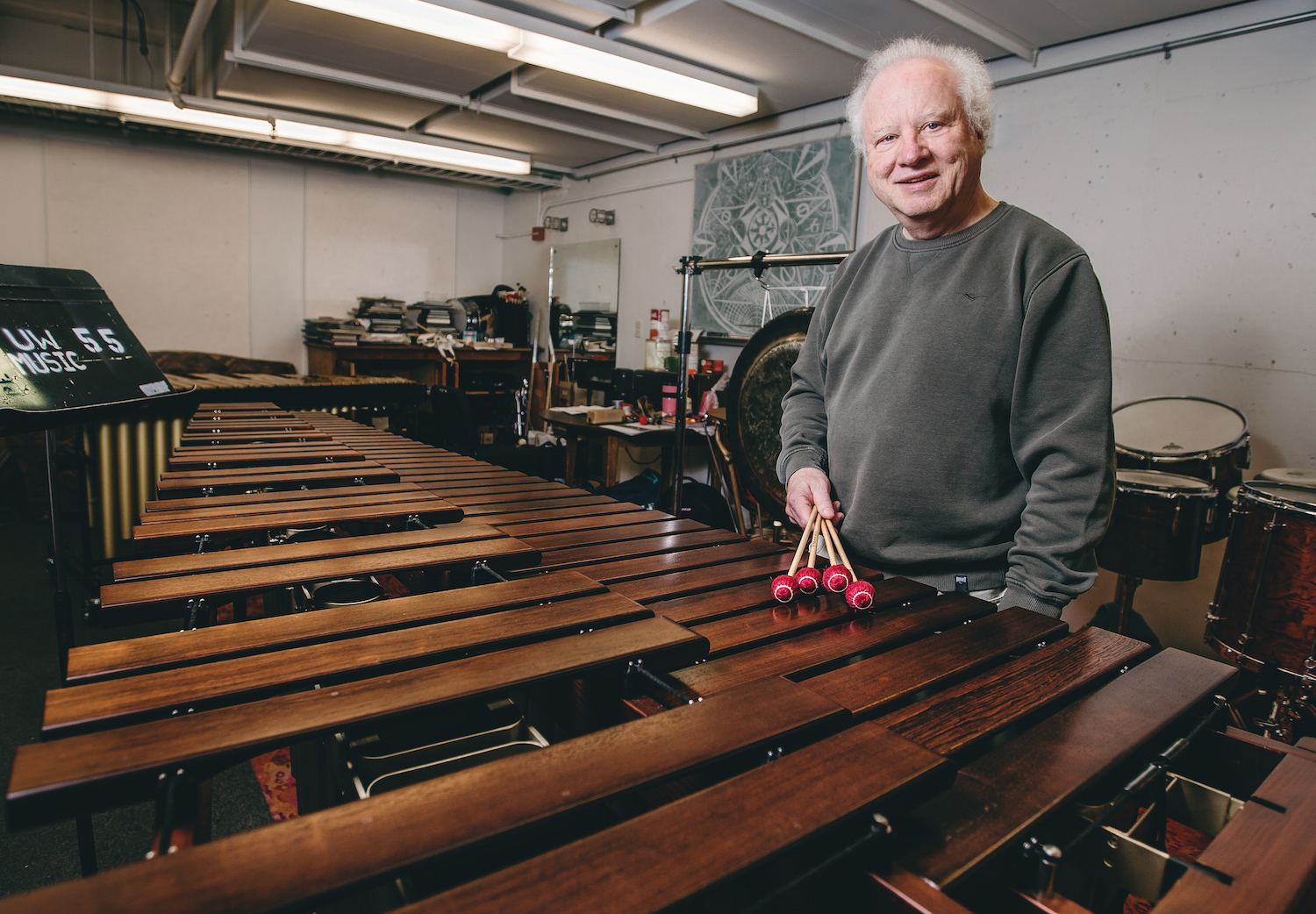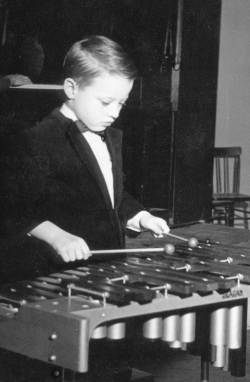
Faculty Friday: Tom Collier
A musician can make a great tour guide.
In Tom Collier’s new jazz album, “Across the Bridge,” he explores the streets, schools, and sounds of West Seattle, the neighborhood he grew up in. The School of Music professor plays two instruments on the nine-track trek: the vibraphone and its king-sized cousin, the marimba.
Song titles include “47th ‘N’ Hudson,” named for the cross streets his family lived on, and “Genesee,” after Genesee Hill Elementary School. “Beach Drive” alludes to the stretch of road along the Puget Sound, “The Junction” to the business district, and “Gold ‘N’ Blues” to the colors of West Seattle High School, which inducted Collier into its Hall of Fame last year.
And the bridge you cross to enter the album? That’s the West Seattle Bridge, which takes you over the Duwamish Waterway and into the west side of Seattle’s lower half.
“Some people have actually put it on their car stereos and driven around to all the places while listening to it,” Collier said.
Recorded in the spring of 2015 and released in November, “Across the Bridge” features jazz guitar masters Bill Frisel and Larry Coryell, drummers John Bishop and Ted Poor, and bass and guitar player Dan Dean, who produced the album.
Collier has recorded and performed jazz, classical, and pop music over the years, with artists like Frank Zappa, Olivia Newton-John, and Barbara Streisand. “I like to play good music,” he said. “It doesn’t matter the style: if it’s good, it’ll touch you.”
His first performance on the xylophone was at age five. He eventually took up the marimba, using the instrument to beat the Seattle band The Frantics in an amateur contest in 1957. “I was 9, and they were in high school,” he said. “They were one of the seminal Seattle rock bands in the 1960s.”

Collier playing xylophone at age 5
In the 1950s and ’60s, Seattleites grooved to groups like The Wailers, The Sonics, and Jimmy Hanna & The Dynamics. Collier took drum lessons from the drummer in The Viceroys. And of course there was a young Jimi Hendrix, who swaggered across Seattle stages before hitting it big.
“There was a hot rock scene around town,” Collier said. “Not many people knew about what was going on here in the ’60s, but some really important people did.”
Northwest bands were mostly popular with local fans, but they were heard by artists around the world. George Harrison had been a fan of The Wailers before The Beatles became world-famous, and Northwest garage bands would go on to influence punk groups like The Ramones.
Collier’s parents, a trumpeter and a pianist, played jazz music around the house, but he didn’t dive into the genre until he heard it on the local rock station, KJR-AM. He recalls being wowed by the drum solo in Dave Brubeck’s “Take Five.” He bought the record, which turned him on to artists like Miles Davis and John Coltrane.
After majoring in music at the UW, Collier moved to Los Angeles to work on film scores. He returned to UW to chair the Percussion program during a musician’s strike in 1980. In the 35 years since, he’s taught a mix of solo instruction and undergraduate survey classes. The latter gives him a chance to introduce non-music majors to new noises.
“If I have 200 students in a history of jazz class, and I can get maybe 10 or 15 of those kids to be interested in jazz, then that’s great,” Collier said. “And the other people, at least they have heard it and it’s in their mind. It’s another thing to measure the music they listen to against.”
Collier has a bachelor’s in Music Performance from the University of Washington. You can hear him play live on Friday, February 12 at Meany Studio Theater or Saturday, February 27 at Tula’s in Belltown.